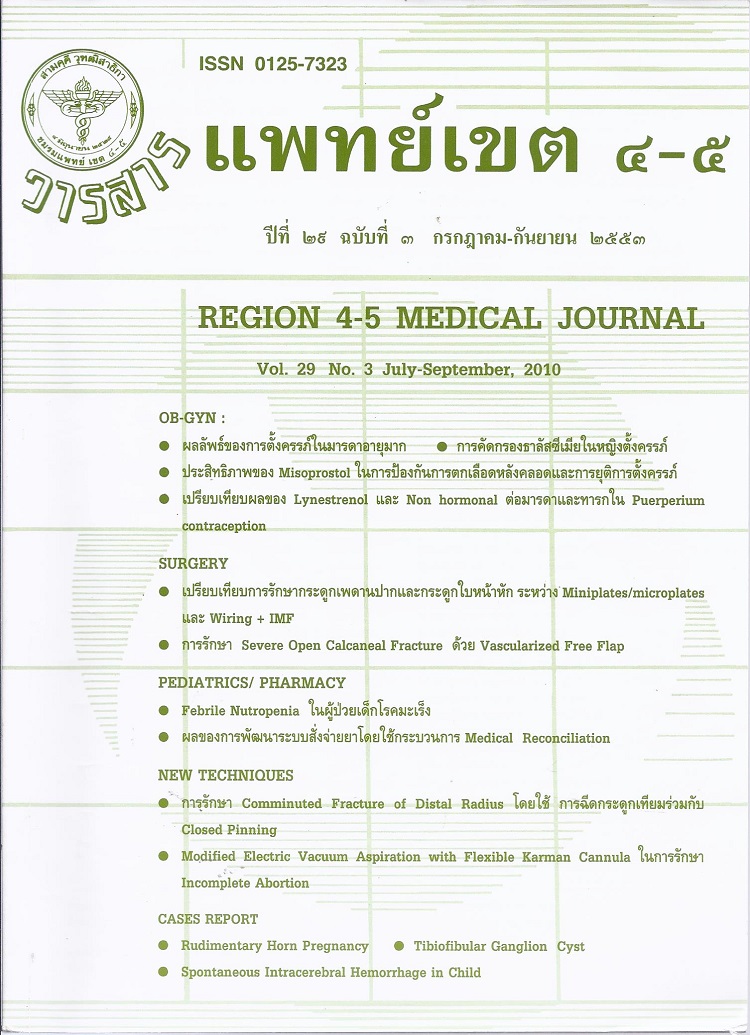ภาวะไข้และเม็ดเลือดต่ำในผู้ป่วยเด็กโรคมะเร็งของโรงพยาบาลราชบุรี
บทคัดย่อ
Objectives : To identify incidence of septicemia and other infections, causative organisms, antibiotics and the results of empirical treatment.
Materials and Method : A retrospective descriptive study in children of cancer patients with febrile neutropenia who admitted in division of pediatrics , Ratchaburi hospital from 1 June 2009 to 31 May 2010.
Results : There were 10 chidren with 19 episodes of febrile neutropenia during the study period. The mean age was 6.83 ± 3.14 years. The incidence of septicemia was 6 episodes (31.6%). Causes of septicemia were gram negative bacteria, P. aeruginosa 2 episodes and E coli 1 episode and gram positive bacteria those were gram positive bacilli, Staph. epidermidis and Streptococcus species 1 episode each. The incidence of urinary tract infection (UTI) was 5 episodes (26.3%). Most organisms caused of UTI were E. coli (40%). The incidence of positive bacterial stool culture was 1 episode (5.3%). The most common empirical antimicrobial agents were ceftazidime and amikacin (68.4%). The response rate was 58.3%.
Conclusion : From this study, we found that incidence of septicemia in children of cancer patients with febrile neutropenia was 31%, most common cause of septicemia was gram negative bacteria. Empirical treatment with ceftazidime and amikacin were still appropriated antibiotics for febrile neutropenic children of cancer patients at Ratchaburi hospital.
ดาวน์โหลด
เผยแพร่แล้ว
รูปแบบการอ้างอิง
ฉบับ
ประเภทบทความ
สัญญาอนุญาต
ลิขสิทธิ์บทความเป็นของผู้เขียนบทความ แต่หากผลงานของท่านได้รับการพิจารณาตีพิมพ์ลงวารสารแพทย์เขต 4-5 จะคงไว้ซึ่งสิทธิ์ในการตีพิมพ์ครั้งแรกด้วยเหตุที่บทความจะปรากฎในวารสารที่เข้าถึงได้ จึงอนุญาตให้นำบทความในวารสารไปใช้ประโยชน์ได้ในเชิงวิชาการโดยจำเป็นต้องมีการอ้างอิงถึงชื่อวารสารอย่างถูกต้อง แต่ไม่อนุญาตให้นำไปใช้ในเชิงพาณิชย์




